MXA RACE TEST: THE REAL TEST OF THE 2019 KTM 125SX TWO-STROKE
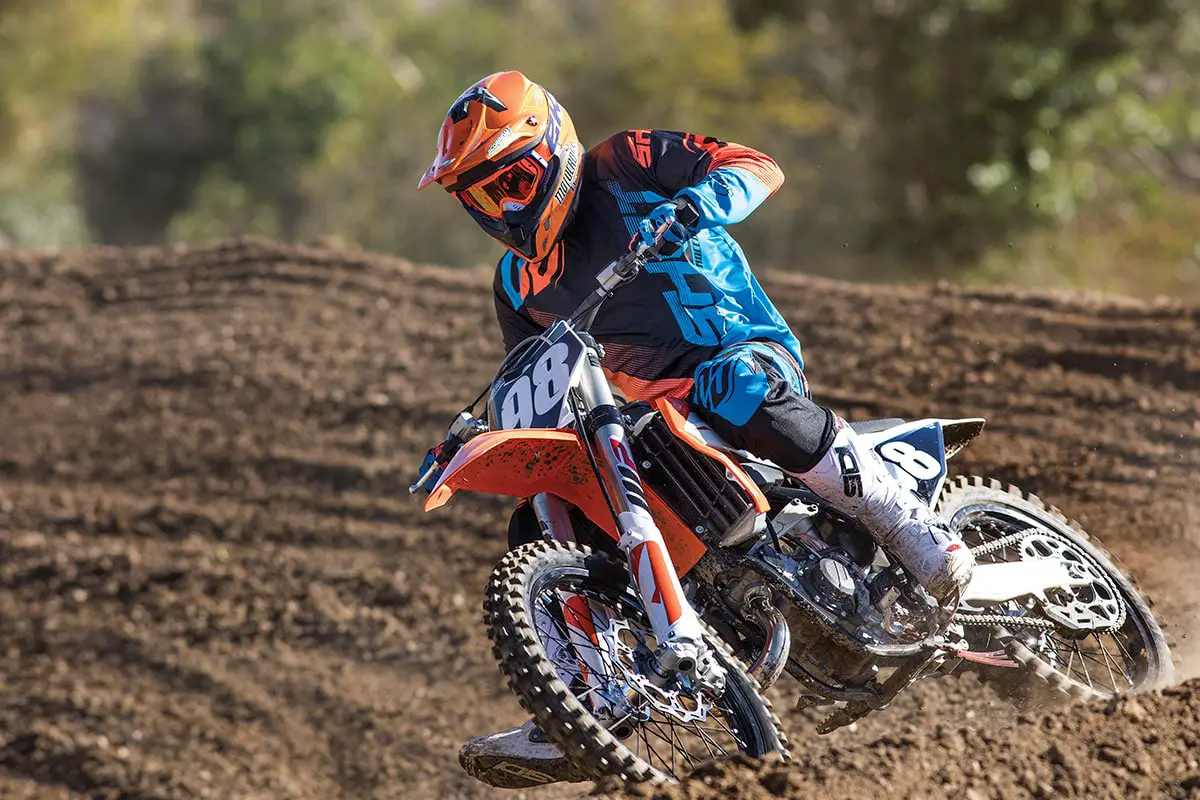
Q: FIRST AND FOREMOST, IS THE 2019 KTM 125SX BETTER THAN THE 2018 KTM 125SX?
A: MXA’s biggest complaint with the KTM 125SX started when KTM switched from the Keihin PWK 38mm carb to the Mikuni TMX 38mm carburetor in 2017. All was peachy keen in 2016 with the Keihin, the all-new WP AER forks and the potent engine. We had no complaints. We guess KTM didn’t like that we had nothing to complain about, so they decided to switch to the Mikuni carb system and asked us to run an oddball 60:1 gas/oil fuel mixture. Maybe it was just us, but it seemed like the sudden request to go from our traditional 40:1 to 60:1 was some kind of last-ditch Band-Aid fix. It was as bipolar as Dr. Jekyll and Mr. Hyde. For 2018, KTM set the premix ratio back to 40:1 and installed jetting that is in the ballpark, with a little tuning. For 2019, KTM figured out the jetting and massaged the engine and suspension to make the 2019 KTM 125SX superior to the 2018 KTM 125SX.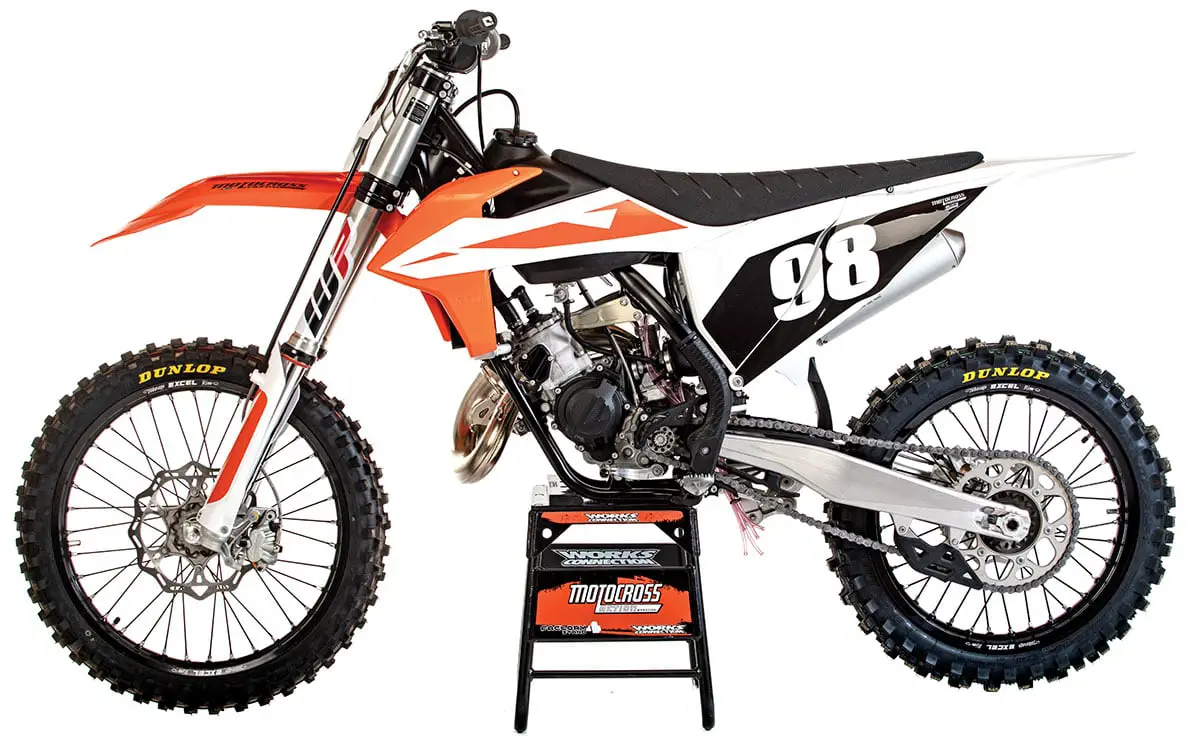 The best handling trait of an under-200-pound KTM 125SX is that you can throw it around and still be strong enough to bring it back from the edge.
The best handling trait of an under-200-pound KTM 125SX is that you can throw it around and still be strong enough to bring it back from the edge.
Q: WHAT CHANGES WERE MADE TO THE 2019 KTM 125SX?
A: The entire KTM SX fleet had across-the-board changes for 2019. There were updates to the frame, airbox, swingarm, bodywork, seat shape, transmission, fuel tank and suspension components. Specific to the KTM 125SX and 150SX, the engines and exhausts were refined for 2019. Here is a quick hit list of 2019 changes:
(1) Frame. The frame offers the same geometry as in 2018. There were frame changes made to alter the frame’s flex characteristics. Torsional stiffness was increased by 10 percent and longitudinal stiffness by 2 percent. KTM did this by increasing the O.D. of the frame’s cross-brace and reengineering the head tube gusseting.
(2) Subframe. The subframe is 40mm longer and lighter.
(3) Engine. The cylinder has a new layout for the exhaust port, and the upper corner of the port is now CNC-milled to ensure more accurate port timing and improved interaction with the updated power valve.
(4) Clutch. The 2019 125SX got the new DS clutch (Diaphragm System). The DS clutch has a cup-shaped Belleville washer replacing the five coil springs. The 2019 250SXF and 350SXF also get the DS clutch, whereas the 250SX and 450SXF use the DDS clutch (Damped Diaphragm System). The DDS clutch has six rubber dampers to cushion the jolt of the more powerful engines.
(5) Seat. The seat offers more foam in the middle of the saddle to create a flatter, rounder and taller seat.
(6) Airbox. The airbox mimics Husky’s restricted airflow. Additionally, the intake snorkel is also straighter.
(7) Fuel tank. The polyethylene tank has been redesigned, although it still has the same 1.85-gallon capacity.
(8) Exhaust. The two-stroke pipe and silencer have been redesigned. The pipe is manufactured using 3-D stamping technology to get an optimized shape. The molded plastic silencer hanger bracket from 2018 has been changed to old-school welded aluminum brackets.
(9) Swingarm. The longer rear swingarm slots allow the rear wheel to be moved rearward an additional 5mm.
(10) Kick starter. KTM reinforced the seat of the kickstarter’s intermediate gear for reliability purposes.
(11) Clutch cover. The clutch cover is narrower, reducing engine width by 10mm.
(12) Suspension. The fork’s piston rods, rebound spring and guide springs are revised. The suggested clicker settings are also updated on the fork and shock for 2019.
(13) Triple clamp. The top clamp is wider in the front by 5mm and is more rigid than it was in 2018.
(14) Radiators. The radiators are more efficient thanks to a slimmer shape, 12mm-lower mounting and 4mm-larger cross-over tubes. The 2019 cooling system holds 11 percent more coolant.
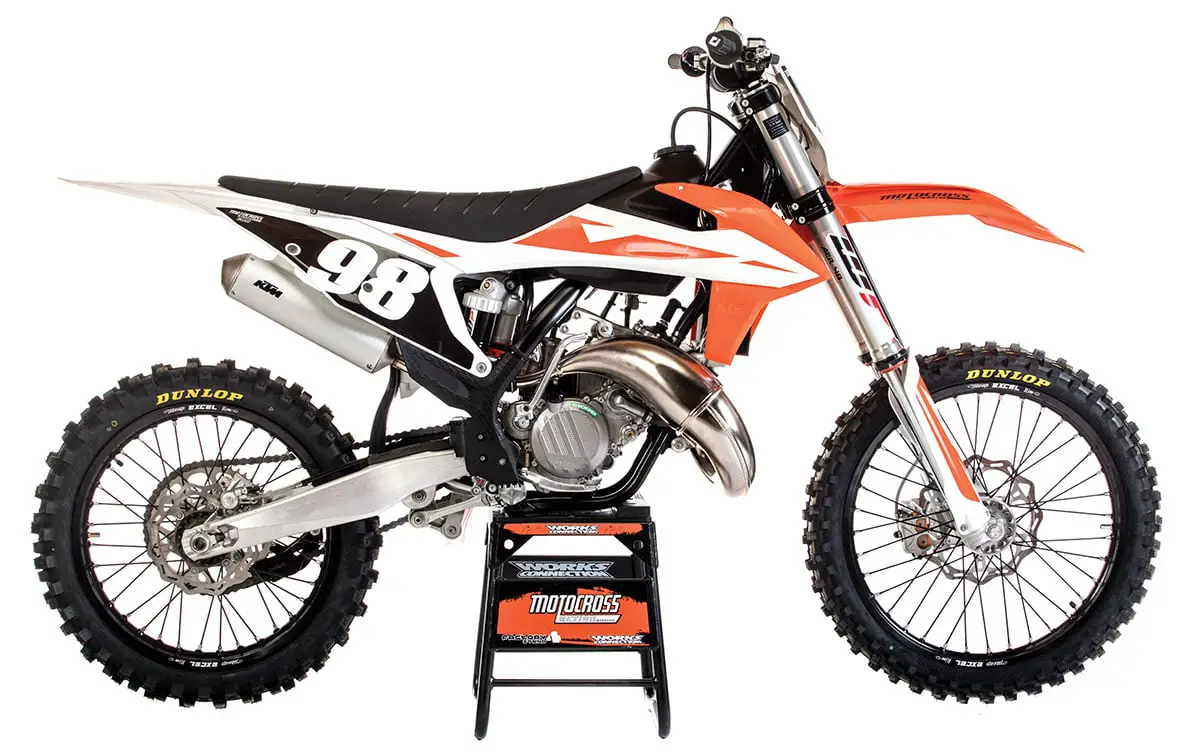
Q: HOW MUCH DOES THE 2019 KTM 125SX COST?
A: At $7199, the new KTM 125SX costs $200 more than the 2018 model. As we have come to expect, new model prices never go down; they either flatline or go up. The 2019 Husqvarna TC125 also rose $200 to $7299, while the 2019 Yamaha YZ125 remained at $6400.
Q: HOW DOES THE 2019 KTM 125SX RUN ON THE DYNO?
A: The 2019 KTM 125SX produces a hair under one full horsepower more than the 2018 model. The peak horsepower is 38.23 ponies at 11,300 rpm. The tiddler’s torque numbers have gone north for 2019 as well. Peak torque is 17.84 at 11,200 rpm, which is a 1/2-pound more grunt than its predecessor. With the KTM 125SX’s peak torque being situated high in the rpm range, it leaves no doubt that you have to be on the pipe to get the most out of the small-displacement Austrian engine.
Q: HOW DOES IT RUN ON THE TRACK?
A: The increased numbers on the dyno registered with our test riders on the track. Every MXA test rider felt the 2019 KTM 125SX had better pick-up and pulled harder from mid to top. It was also easier to keep the power in the sweet spot, thanks to the added torque. Although you can’t be lazy, the 125SX engine does create enough torque low in the rpm range to lug the power from gear to gear. Don’t be fooled into thinking this is a torquey engine; it’s not. It is just easier to manage the two-stroke’s power and to recover from mistakes. You must ride the 125SX like a traditional 125cc engine. That means flat out in the upper rpm range.
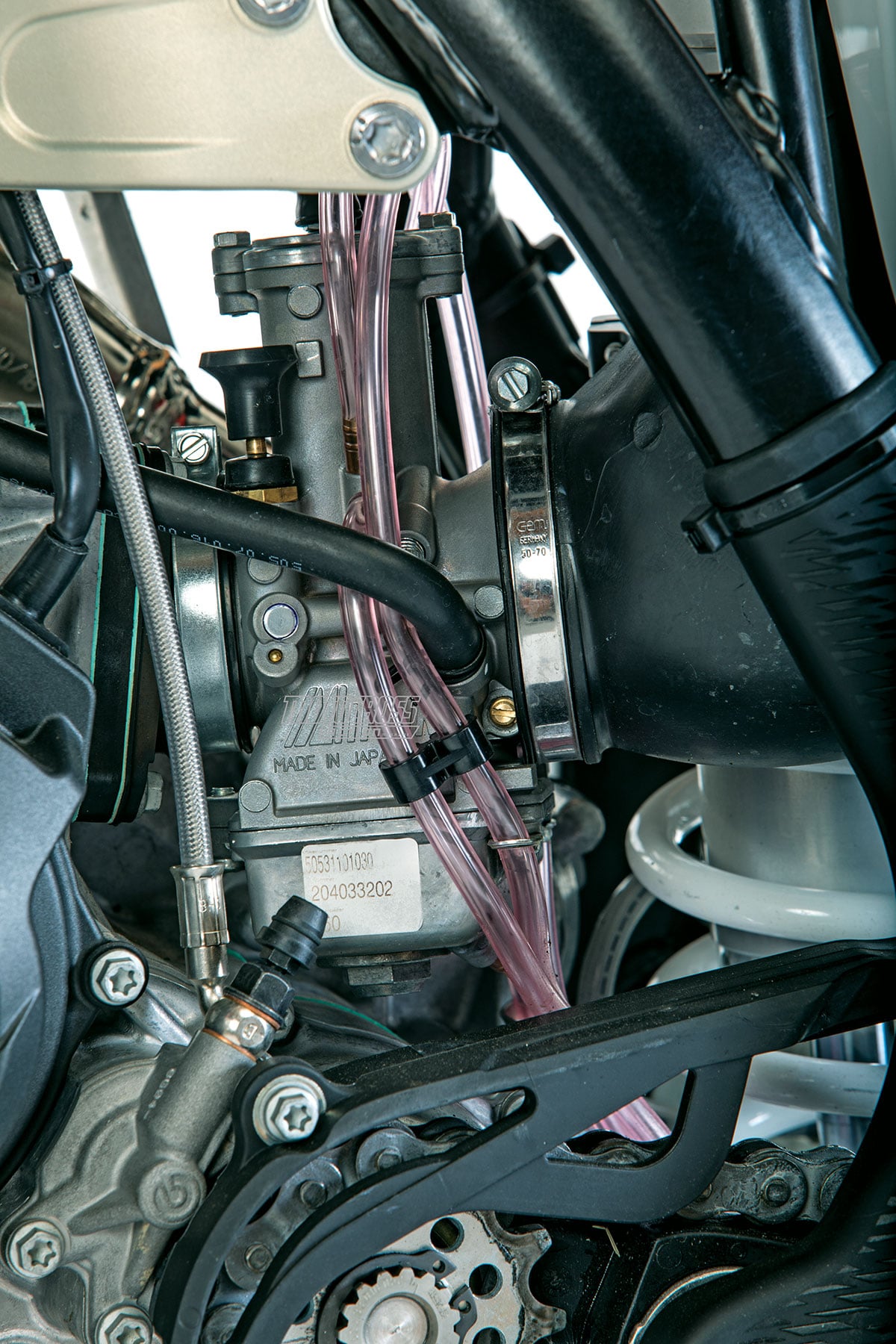
Q: ARE THE KINKS WORKED OUT OF THE MIKUNI TMX CARBURETOR?
A: The switch from the Keihin PWK 38mm carb to the Mikuni TMX 38mm carb in 2017 did not go smoothly for KTM or its two-stroke customers. It should be noted that the beloved Keihin carb had its own teething problems as well. Those times were forgotten once KTM got the Keihin PWK carb to purr like a kitten.
The Mikuni carb was impossible to tune on both the 125SX and 250SX in 2017. KTM spec’ed the carb to run on a 60:1 pre-mix ratio. We still have no clue why. All we know is that we continually chased brass up and down the chart. If it didn’t ping, it bogged, and it didn’t detonate, it popped. There was no happy medium. For 2018, KTM did away with the weird 60:1 fuel/oil ratio and went back to a much more conventional 40:1, although KTM kept the lean mixture on the 250SX for some unknown reason.
In 2019, KTM went to a bigger main jet and different needle. The jetting changes were a big plus. After two years of chasing the right jetting, KTM got it right. The 2019 KTM 125SX ran clean with the stock jetting at our SoCal tracks. It was a nice change to be able to put in laps rather than changing brass every time there was a change in temperature or elevation.
Q: HOW WAS THE GEARING?
A: On the 2018 KTM 125SX, most MXA test riders went lower on the gearing—from a 50- to a 51-tooth rear sprocket. The goal a year ago was to increase the grunt and beef up the midrange power to help carry more speed through the corners. For 2019, KTM’s increased power spread was enough to curb our craving for lower gearing. The stock gearing felt great from gear to gear.
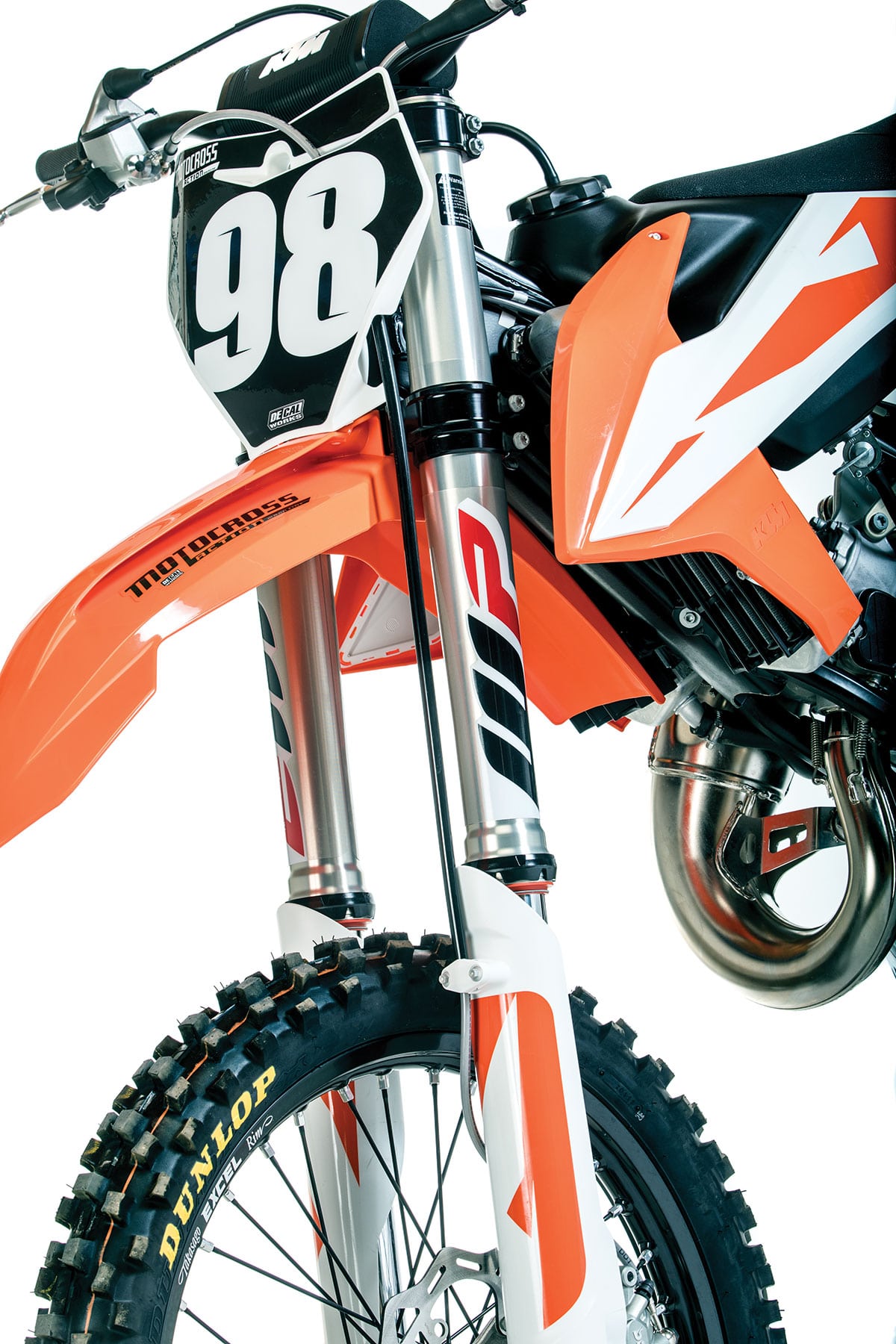
Q: ARE THE WP SUSPENSION COMPONENTS BETTER THAN LAST YEAR?
A: For 2019, KTM refined the WP AER 48mm forks with new settings and updated parts. The standard air pressure was brought down from 124 psi to 120 psi, and the rear spring rate was lightened from a 42 N/m to a 39 N/m spring to match the lighter fork settings. The 39 N/m spring worked well for riders from 165 to 195 pounds. For riders under 160 pounds, we suggest going down another spring rate to a 36 N/m. Riders heavier than 190 pounds should go back to last year’s 42 N/m rear spring. The overall fore/aft balance was spot-on, and the standard clicker settings were ballpark.

Q: WHAT DID WE HATE?
A: The hate list:
(1) Preload ring. There has to be a better way to adjust preload on a rear shock. When the shock is new and everything is working well, we don’t mind prying on the preload adjuster with a long screwdriver. But, once it gets a little glitchy, it becomes a hassle. It doesn’t take a lot of prying to tear up the nylon preload ring.
(2) Power-valve adjuster. The Robertson wrench (square) power-valve adjuster is useful but ridiculous to use. Who has a Robertson wrench? Be forewarned that if you resort to a flat-bladed screwdriver to make power-valve adjustments, the Robertson wrench will never fit again.
(3) Fork-bleed screw. The fork’s right-side air-bleed screw is a #15 Torx. KTM should go back to the Phillips-head screw that they used a few years ago.
(4) Spokes. Even though the KTM wheels have new spoke nipples, the spokes still come loose. Before every ride, check the rear spokes next to the rim lock. If they are tight, you’re alright.
(5) Airbox. We are positive that we could get better throttle response and more horsepower if the airbox could breathe better.
Q: WHAT DID WE LIKE?
A: The like list:
(1) Weight. This bike feels as light as the sub-200-pound bike it is.
(2) Brakes. They are the best in class for a 223-pound 450 four-stroke. Imagine how good they are on a 195-pound 125.
(3) Hydraulic clutch. KTM’s self-adjusting clutch is ahead of its time. Go ahead and abuse it. It can take whatever you can dish out.
(4) Airbox cover. The no-tools airbox cover is awesome, and so is the trick way that KTM mounts the air filter.
(5) Engine. This small but mighty engine puts out some serious power and is becoming easier to ride for the masses.
(6) Suspension. The WP suspension components have always worked well on the 125SX—and they still do.
(7) Tires. The 125SX comes with our favorite tires: Dunlop Geomax MX3S’s front and rear.
Q: WHAT DO WE REALLY THINK?
A: The 2019 KTM 125SX has not stagnated at the factory for the last 13 years like you know who. The 2019 KTM 125SX is the best production 125cc machine to ever roll down a production line. If you are serious about having the best 125 on the track, the fast, light, agile and basic 125SX is a must-have bike. If you are just looking for a fun 125 to ride on play days, the YZ125 will do the trick for a lot less money.
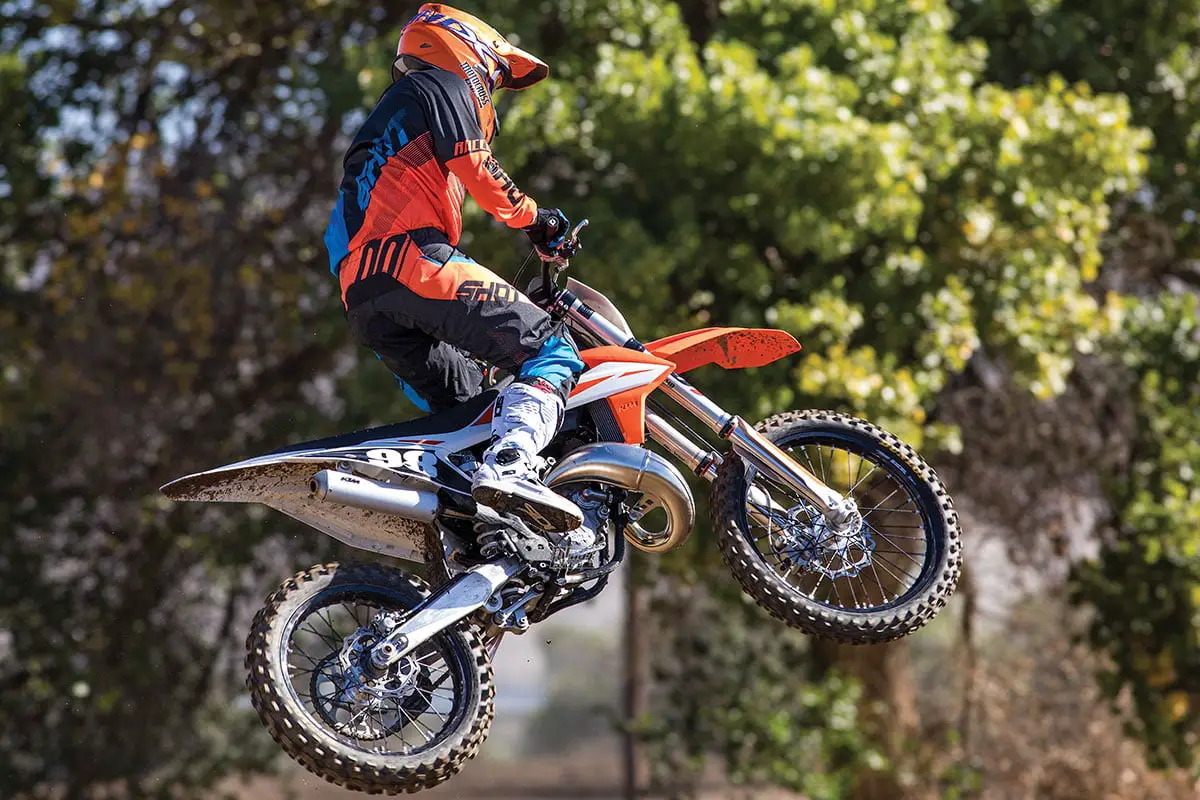
MXA’S 2019 KTM 125SX SETUP SPECS
This is how we set up our 2019 KTM 125SX for racing. We offer it as a guide to help you find your own sweet spot.
WP AER FORK SETTINGS
First, focus on balancing out the bike for your weight by adjusting the air in the forks. If the forks are diving into the corners, go up a few psi. If they tend to be rigid and pushing out on the entrance of corners, drop the psi down a few points. The forks have good bottoming resistance, so going softer for a plusher ride is not an issue. For hardcore racing, we recommend this fork setup for the 2019 KTM 125SX (stock settings in parentheses):
Air pressure: 120 psi
Compression: 12 clicks out
Rebound: 12 clicks out
Fork-leg height: Stock
Notes: Don’t worry about checking the WP AER fork’s air pressure each and every time you hit the track. Do, however, bleed both of the air screws on the top of the forks.
WP SHOCK SETTINGS
After we set sag at 106mm, most riders didn’t change a thing. For hardcore racing, we recommend this shock setup for the 2019 KTM 125SX (stock specs are in parentheses):
Spring rate: 39 N/mm
Race sag: 106mm
Hi-compression: 1.5 turns out
Lo-compression: 15 turns out
Rebound: 15 turns out
Notes: The stock shock settings are in the ballpark.
MIKUNI TMX 38MM JETTING SPEC
Here’s what we ran in our 38mm TMX.
Main jet: 500
Pilot: 35
Needle: 6BFY43-71
Clip: 2nd position from top
Air screw: 1.5 turns out


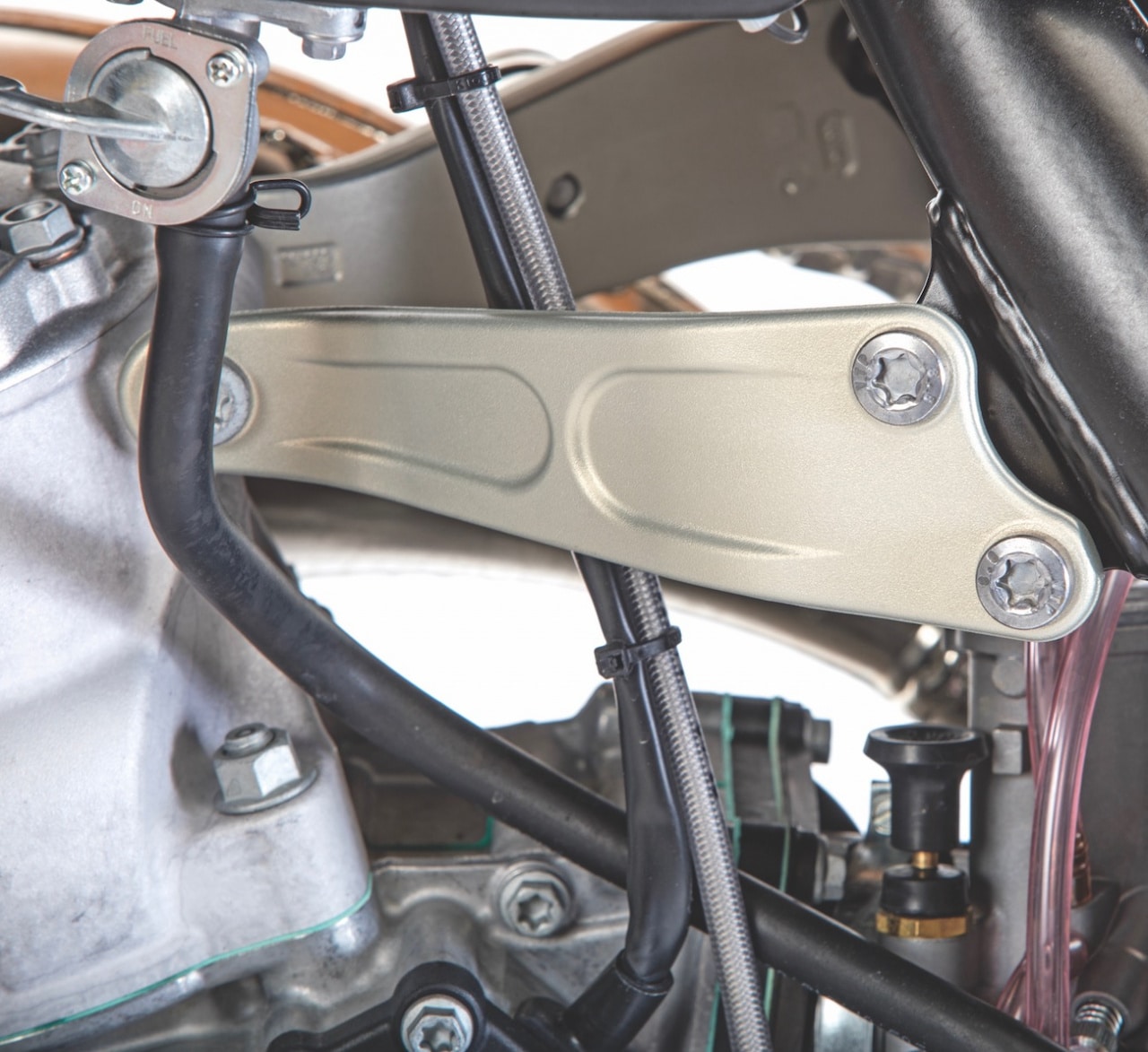
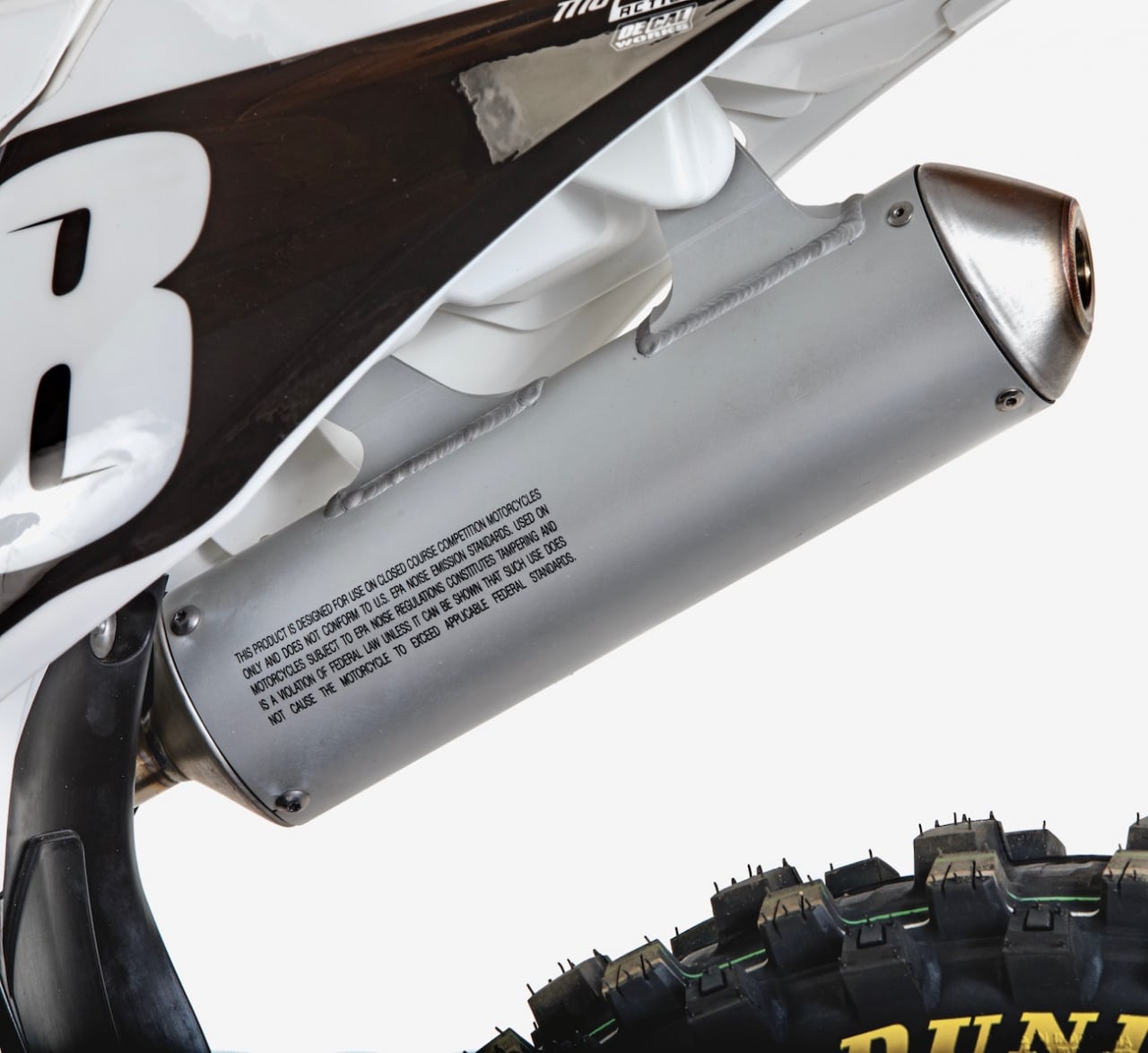

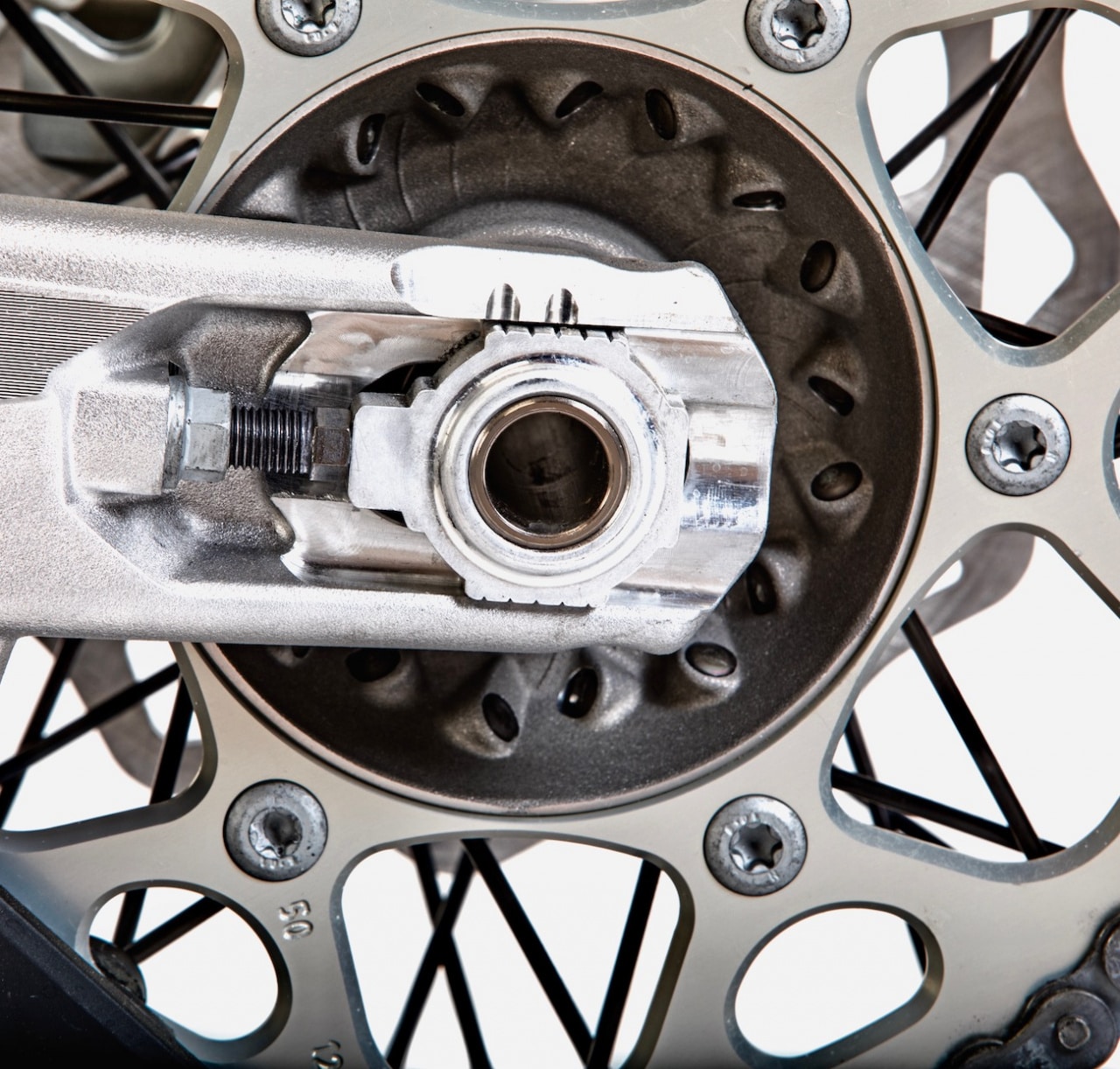
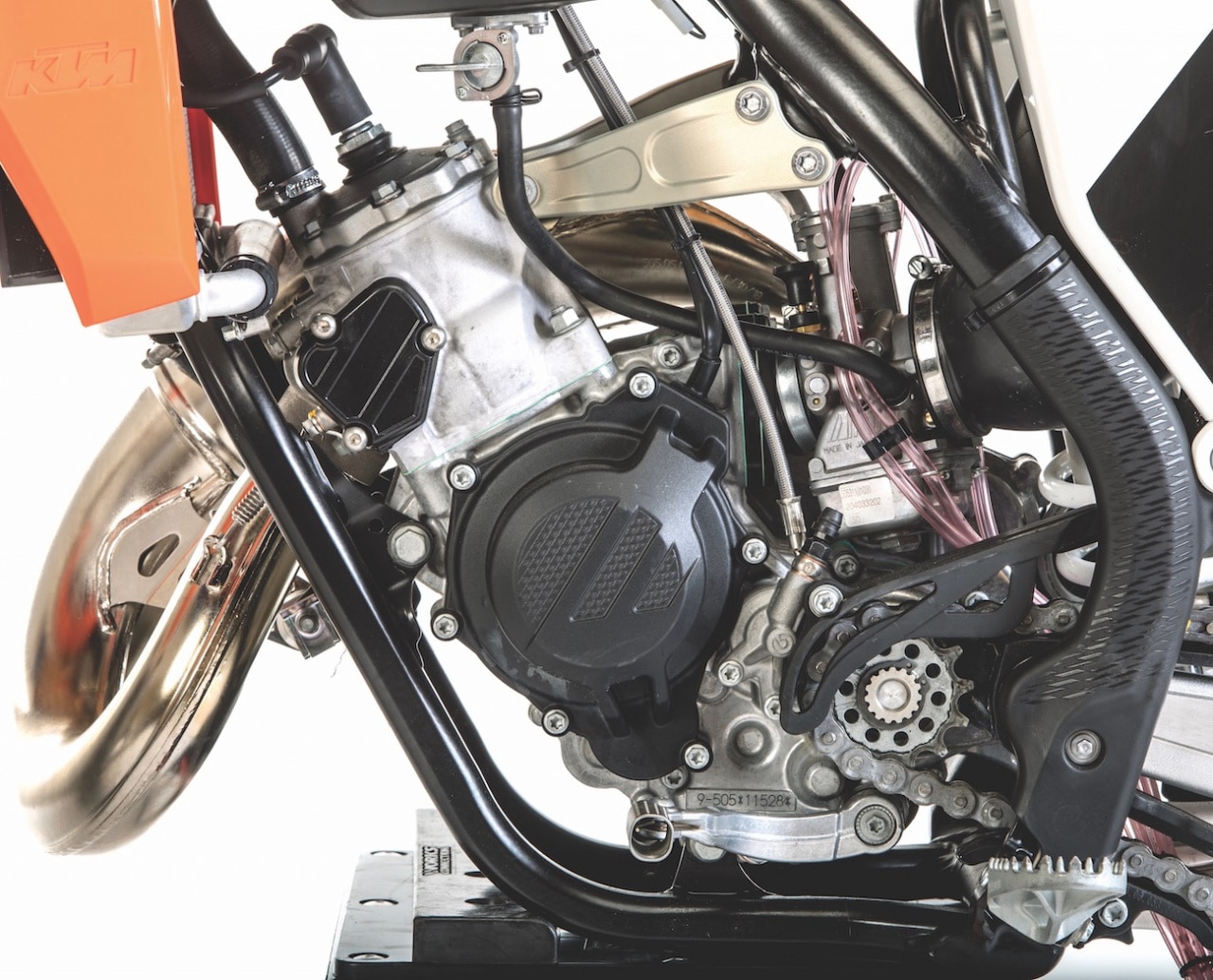




Comments are closed.